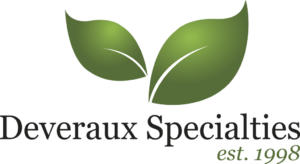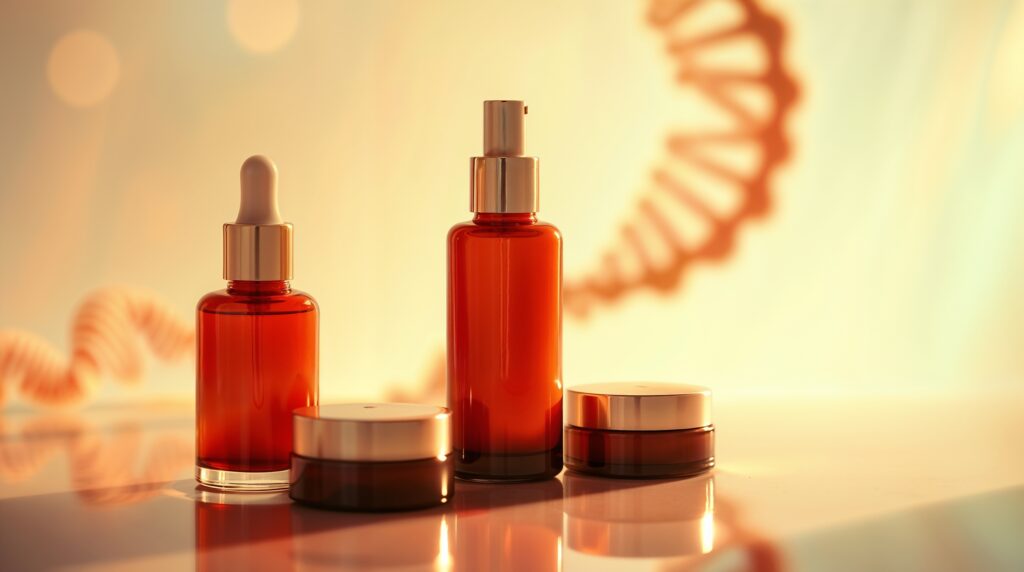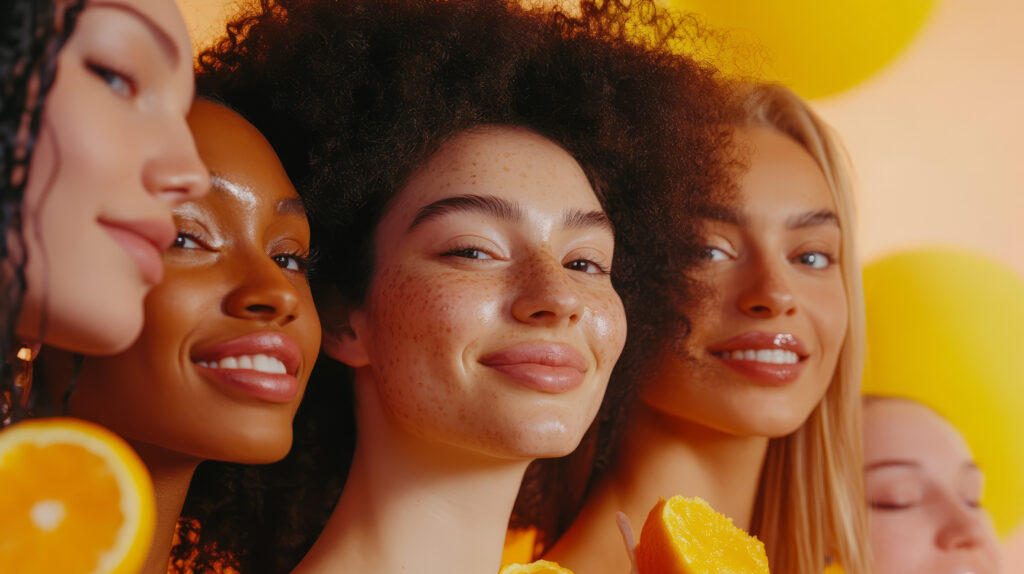A Clean Start for Cosmetic Surfactants
In every rinse-off cosmetic product—shampoo, face wash, body cleanser—there lies an often-underestimated component that can make or break a formula: the surfactant. For decades, formulators have relied on traditional systems like SLES (Sodium Laureth Sulfate) for their foaming and cleansing properties. But as demand increases for products that are not only effective but also sustainable, non-irritating, and microbiome-friendly, the cracks in this old standard have become more visible.
Today’s formulators are tasked with designing systems that do more than cleanse—they must hydrate, protect, enhance sensorial feel, and minimize impact on both skin and the environment. With this challenge in mind, Deveraux Specialties introduces Sodium Olivoyl Glutamate, a ‘surf-active’ ingredient from Kalichem that marries technical performance with ecological integrity. In this blog, we explore the pressures facing modern surfactant systems and how Sodium Olivoyl Glutamate offers a scientific, scalable path forward.
Mildness, Multifunctionality, and Sustainability
Sodium Olivoyl Glutamate (OG) from Kalichem is not just a milder alternative to sulfates—it’s a rethinking of what a surfactant can be. Classified as a ‘surf-active’, OG functions as both a cleansing agent and a skin/hair-conditioning active. Its dual identity comes from its structure: the molecule is created by functionalizing upcycled lampante olive oil fatty acids with glutamic acid, a skin-compatible amino acid and key component in hair keratin.
What makes this innovation noteworthy is its ecological sourcing. Olive oil used in this material comes from permanent crops that do not require annual sowing, chemical-heavy irrigation, or extensive mechanical processing. This offers lower CO₂ emissions, no solvent extraction, and full traceability from a non-GMO, food-industry byproduct—a prime example of circular economy principles applied to raw materials [3].

Its real power, however, lies in performance. OG doesn’t just claim to be milder—it has been tested head-to-head against traditional and mild benchmarks in both in vivo and ex vivo settings. Across hydration, erythema index, TEWL, and hair conditioning metrics, OG delivers measurable improvements without compromise. It enables formulators to build next-generation rinse-off systems that are simultaneously effective, luxurious, and kind to both skin and the environment.
Quantifying Mildness: In Vivo and Ex Vivo Evidence
In a controlled in vivo study, OG demonstrated a 49.21% increase in stratum corneum hydration, the highest among all tested surfactants including SLES, Sodium Cocoyl Glycinate (SCG), Sodium Lauroyl Glutamate (SLG), and Decyl Glucoside. This level of hydration positions OG as a true skin-conditioning agent—not just a cleanser [4].
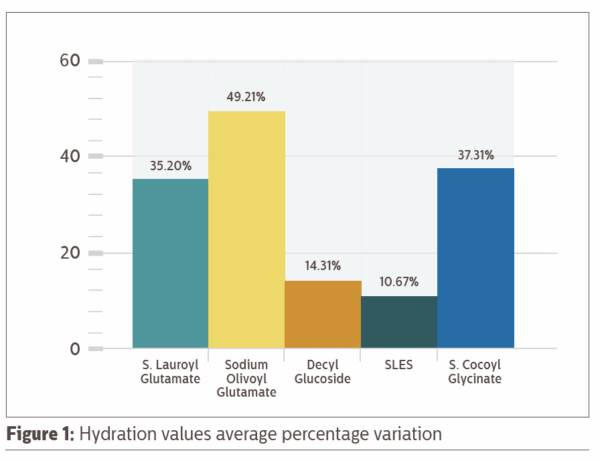
Skin compatibility was equally impressive. The erythema index—a measure of skin redness and irritation—decreased by 4.80% with OG use. By contrast, SLES showed a nearly 10% increase, confirming its irritant potential. OG was the only surfactant in the test group that demonstrated a statistically significant reduction in skin inflammation.
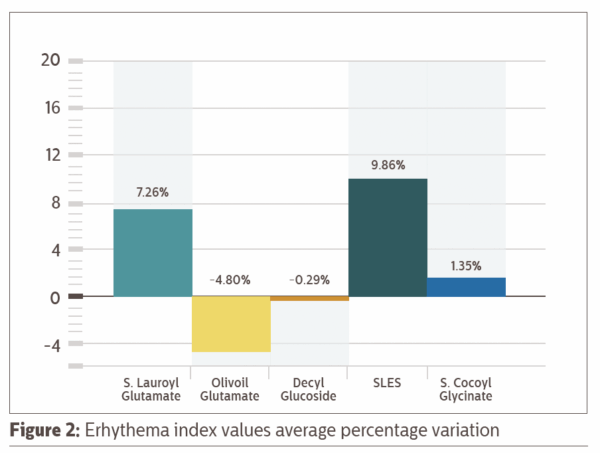
In barrier protection, OG outperformed others in reducing TEWL, confirming its non-aggressive nature and its ability to preserve the integrity of the skin’s protective layer. These findings are critical for formulators targeting sensitive skin, baby care, and dermatological applications.
Hair care results were equally conclusive. OG increased contact angle on hair strands by +25.8%, suggesting superior cuticle adhesion and conditioning. Meanwhile, SLES-treated strands exhibited a –20% contact angle change, indicative of cuticle damage and moisture loss. Additional testing showed OG led to a 14% increase in shine and –4.4% reduction in frizz, making it an ideal choice for performance-oriented shampoo and co-wash systems.

Foaming tests also revealed OG’s ability to generate a denser, creamier foam than standard surfactants, with superior retention over time. This matters for sensorial experience—a key metric for consumer satisfaction in rinse-off products.
Simplify, Satisfy, and Sustain: The New Formula for Success
The movement toward skin wellness and eco-conscious beauty is not a fleeting trend—it’s a structural shift in how consumers assess product value. According to a 2024 CosmeticsDesign survey, 63% of global consumers now consider ingredient sustainability as critical to their purchase decisions, and over 70% seek “minimalist” formulas with fewer but more functional ingredients [5].
Sodium Olivoyl Glutamate directly addresses these needs. It’s biodegradable, derived from a renewable and traceable source, and requires up to 40% less water to rinse off compared to sulfates and betaines. This supports both consumer needs and industrial water reduction goals, particularly important in markets facing water scarcity or sustainability mandates.
Moreover, its dual-functionality helps formulators simplify their INCI lists while enhancing product performance. Instead of layering a surfactant with humectants, emollients, and irritation-mitigators, OG brings built-in hydration, mildness, and film-forming benefits. This enables faster formulation development, lower regulatory complexity, and better alignment with retailer-driven clean beauty standards.
In short, Sodium Olivoyl Glutamate isn’t just a smart ingredient—it’s a smart strategy.
A Rational Choice for Responsible Formulators
For formulators striving to create high-performance rinse-off products without compromising on skin health or sustainability, Sodium Olivoyl Glutamate represents a compelling solution. It brings together biodegradable sourcing, dermal compatibility, hair conditioning, and superior sensoriality—all in a single ingredient.
As cosmetic science evolves, so too must the tools we use. OG exemplifies what the future of surfactants can be: not merely functional, but functional with purpose. For brands aiming to meet rising consumer expectations while advancing internal sustainability goals, now is the time to transition to next-gen surfactants that serve both human and environmental health.
Ready to reformulate with smarter surfactants?
Contact Deveraux Specialties to request a sample of Sodium Olivoyl Glutamate and discover how it can elevate your formulation strategy.
Olivoil Glutamate FoKSNaB
Resources
- . 7 Final Report on the Safety Assessment of Sodium Lauryl Sulfate and Ammonium Lauryl Sulfate. Journal of the American College of Toxicology. 1983;2(7):127-181. https://doi.org/10.3109/10915818309142005
- U.S. Food and Drug Administration. 1,4-Dioxane in Cosmetics. 2022.
https://www.fda.gov/cosmetics/potential-contaminants-cosmetics/14-dioxane-cosmetics-manufacturing-byproduct - NATRUE Scientific Committee. Sustainability and Cosmetic Ingredients: Principles for the Future. 2021.
https://www.natrue.org/our-commitment/sustainability/ - Kirsty Doolan. “How to choose a sustainability accreditation” CosmeticsDesign Europe. January 8, 2024.
https://www.cosmeticsdesign-europe.com/Article/2024/01/08/Choosing-a-sustainability-accreditation/
